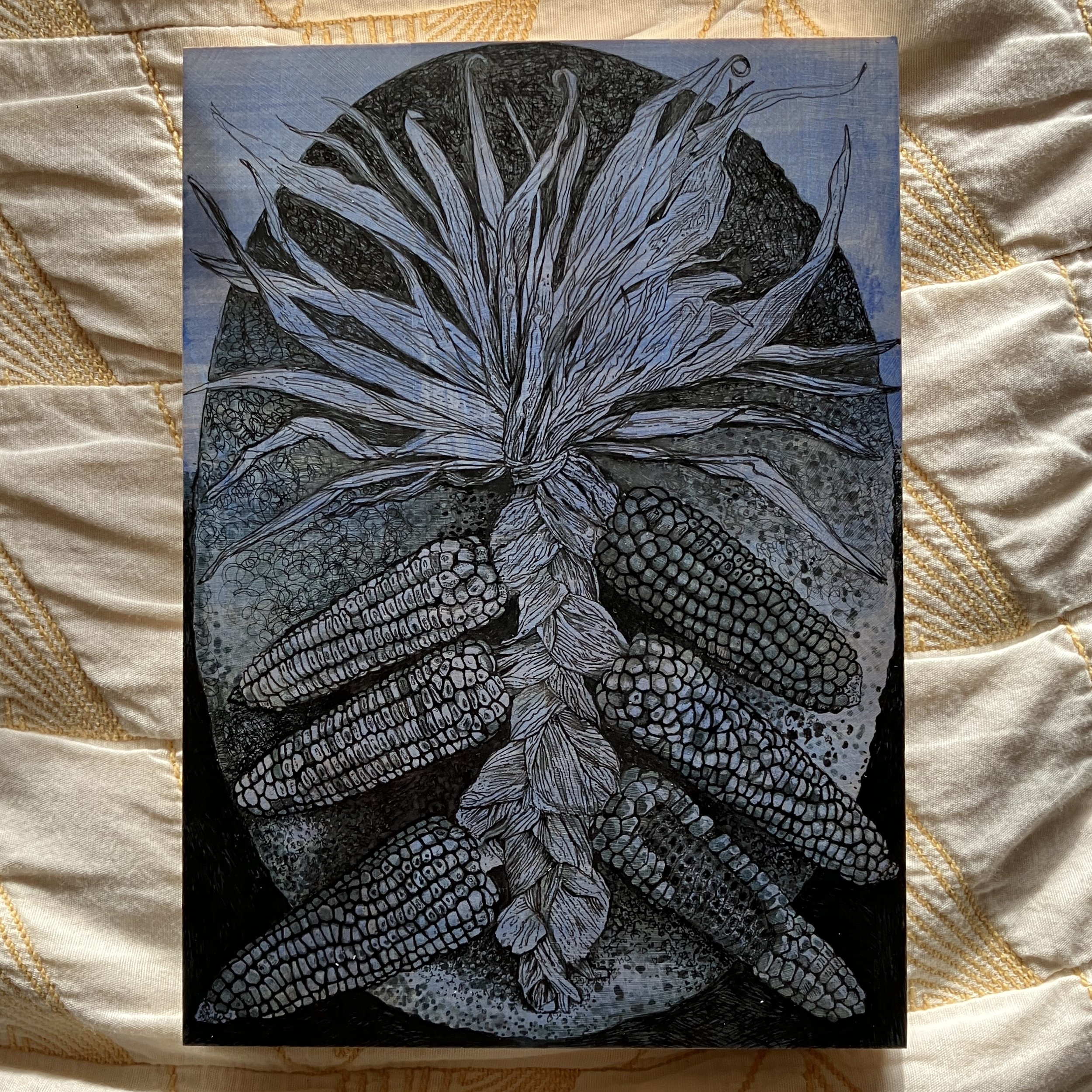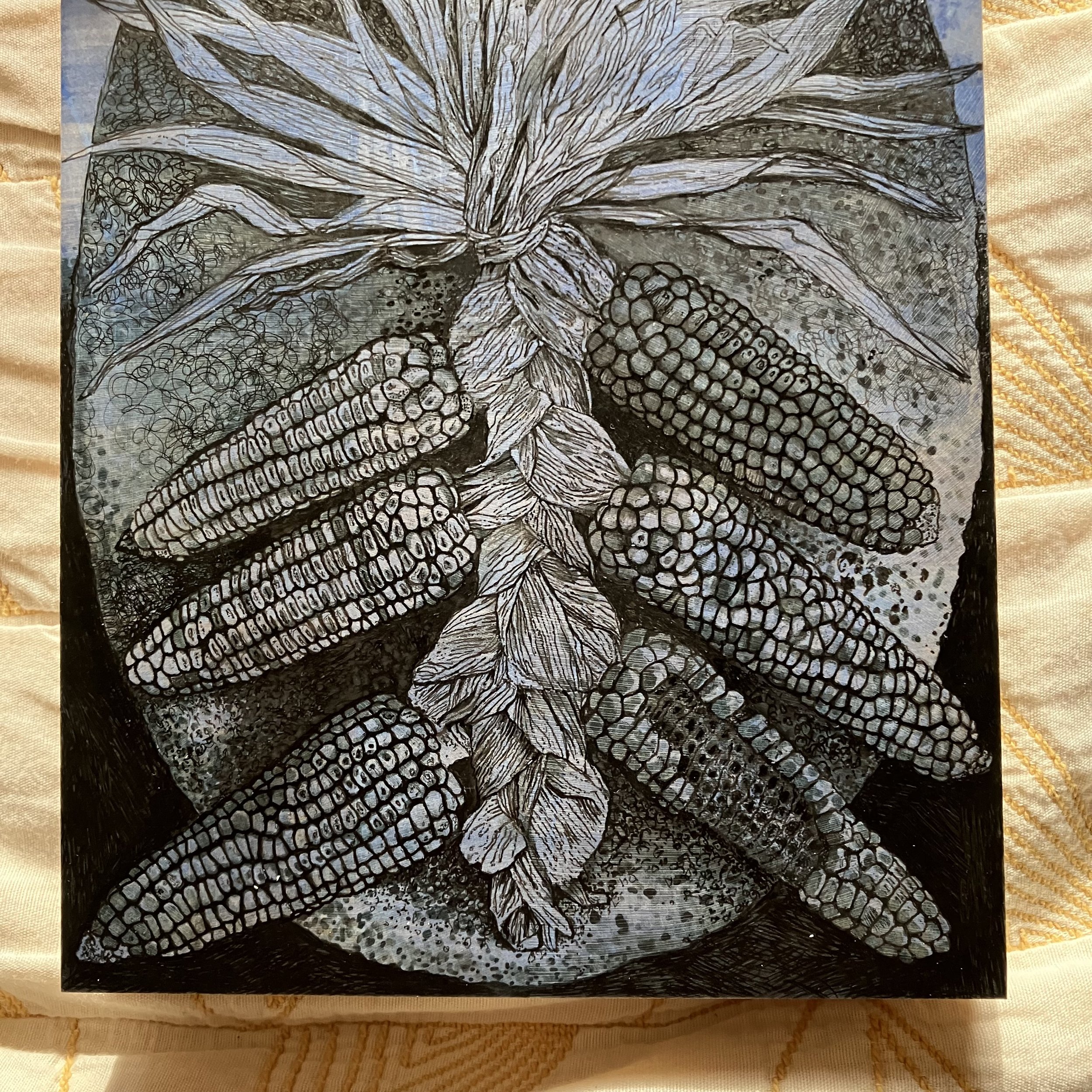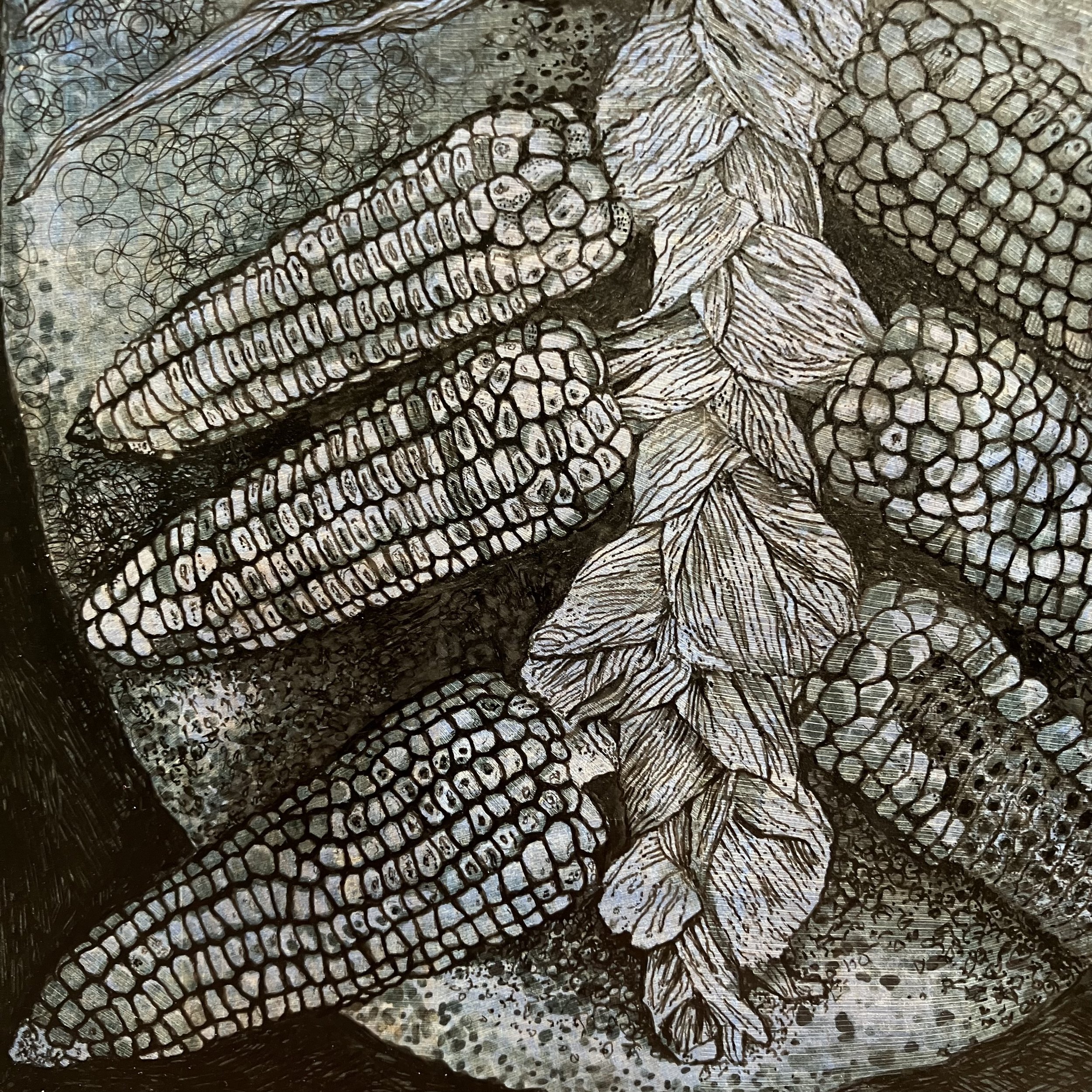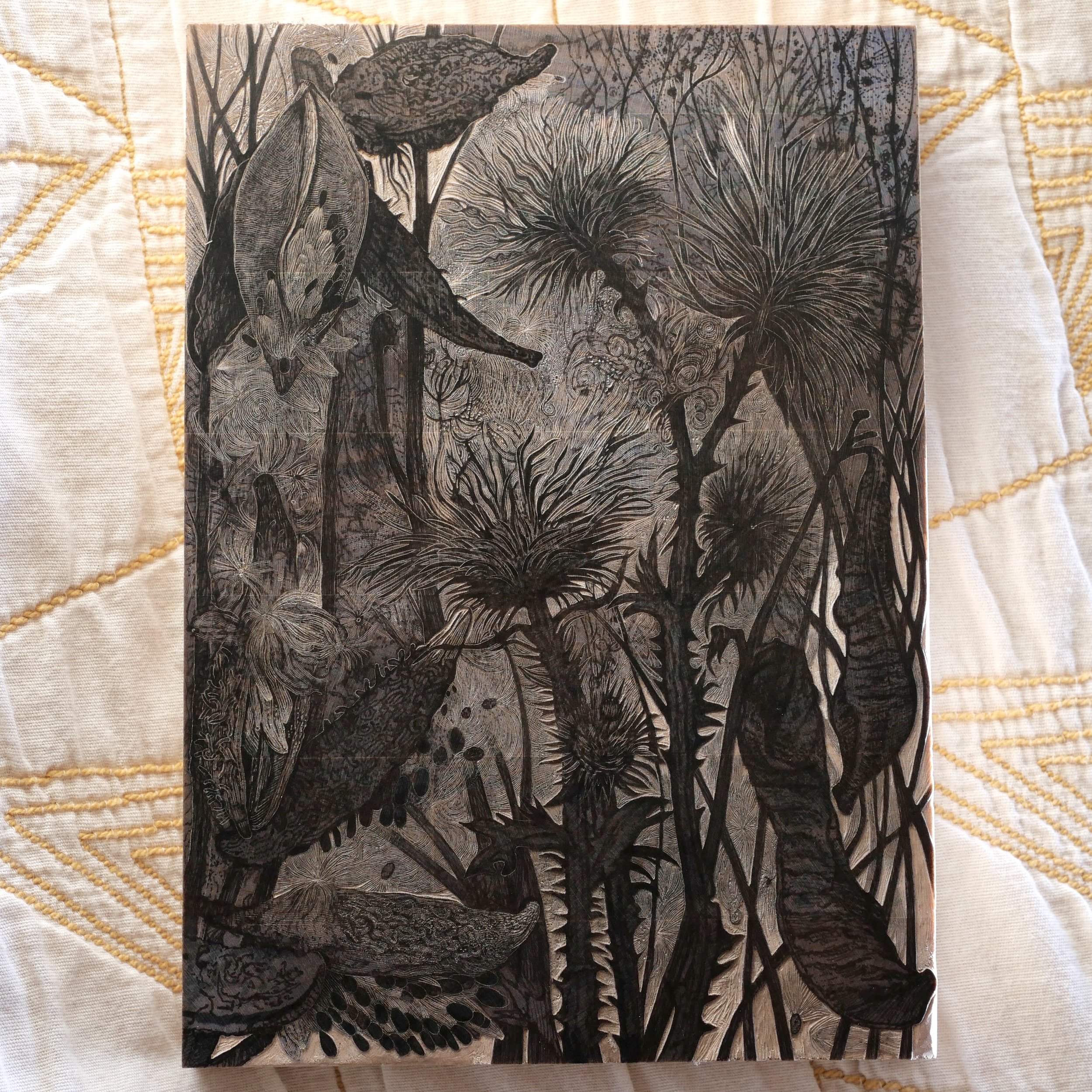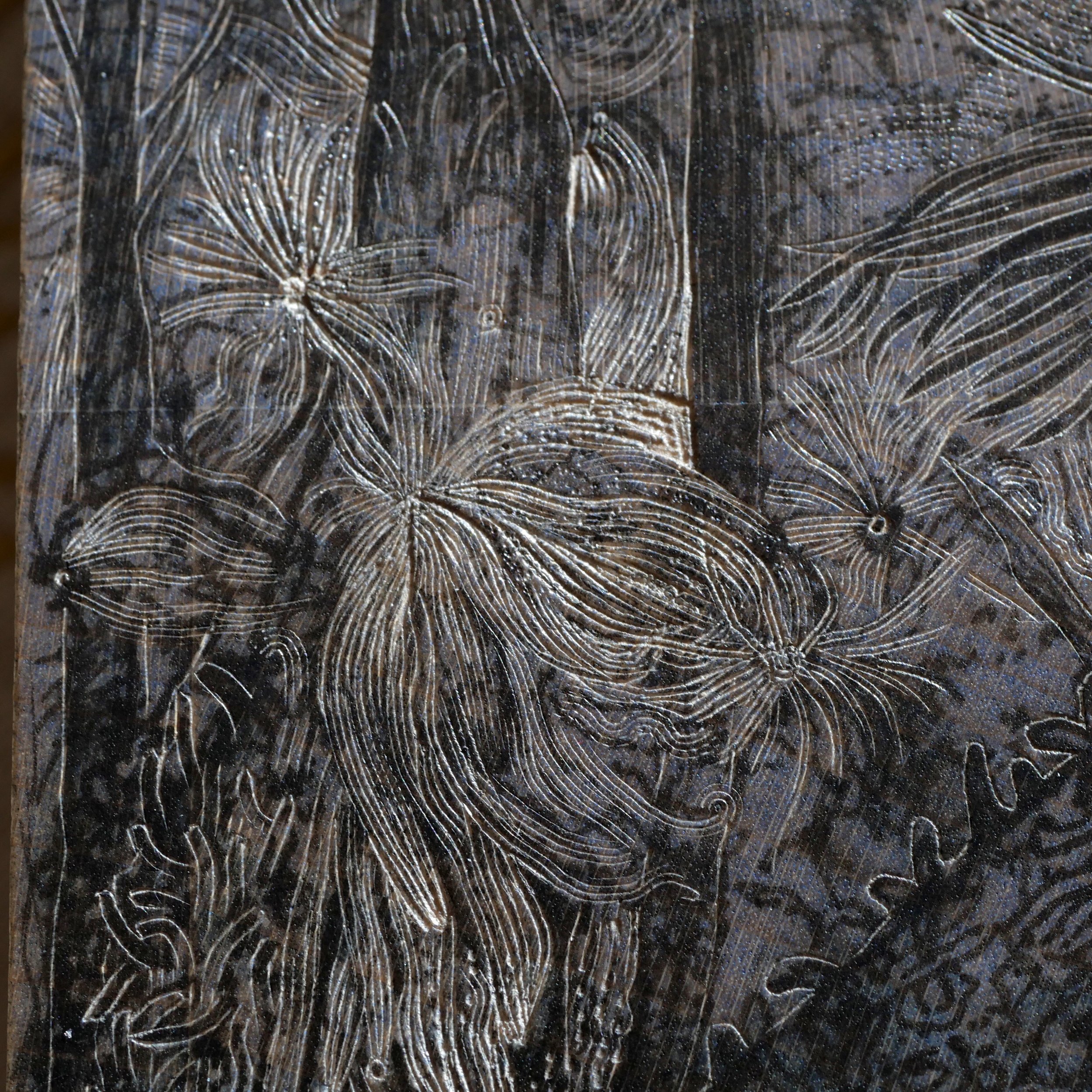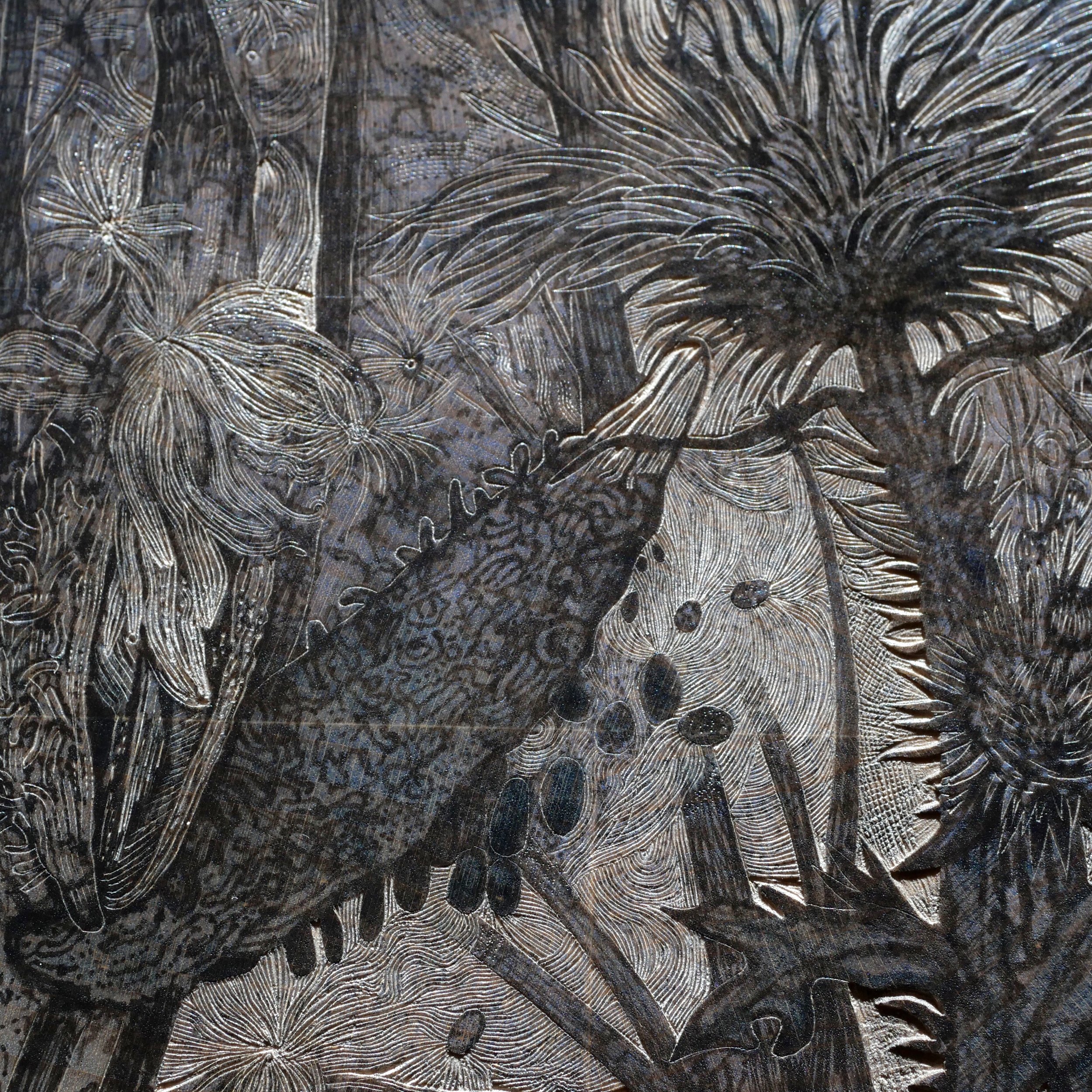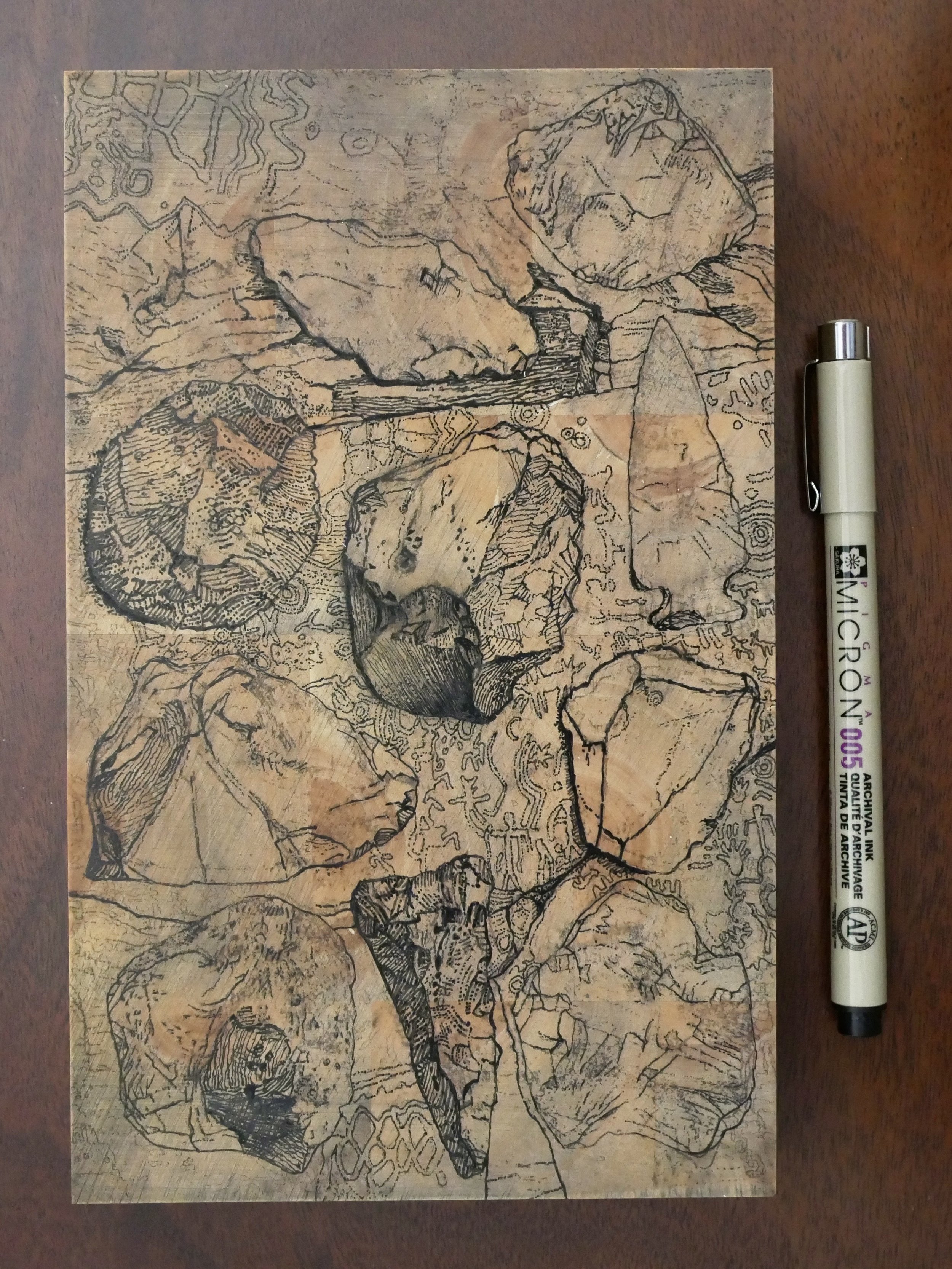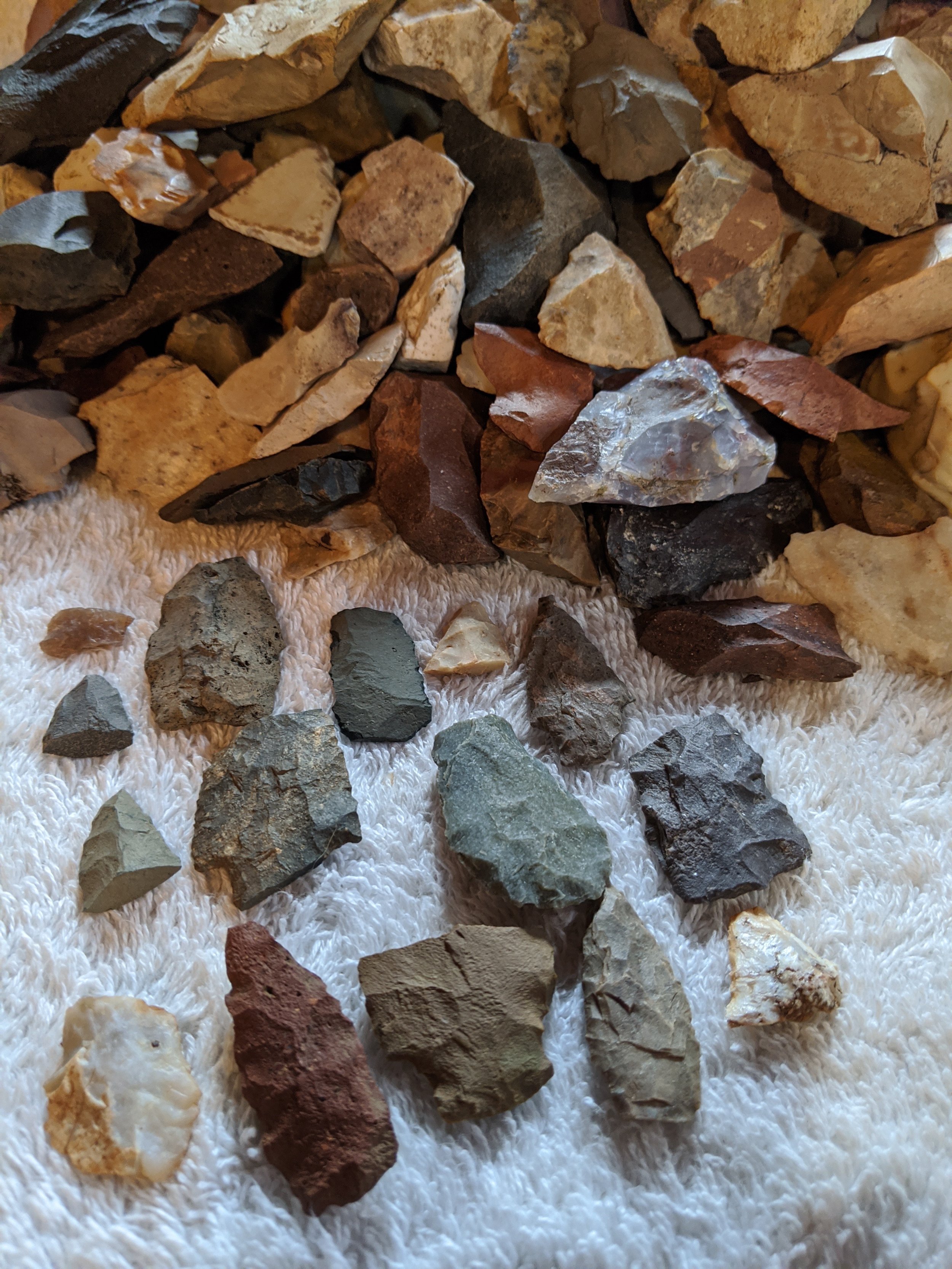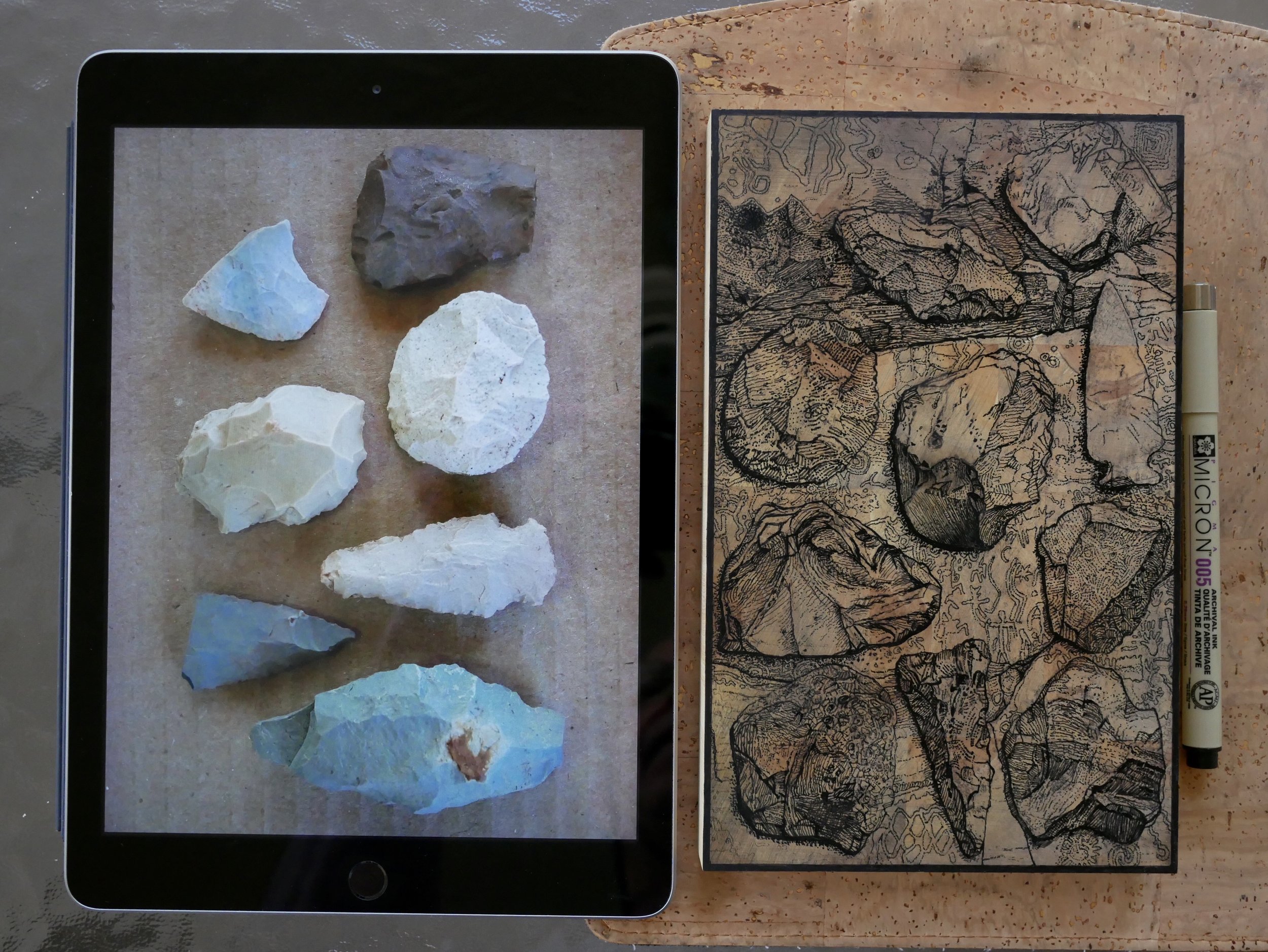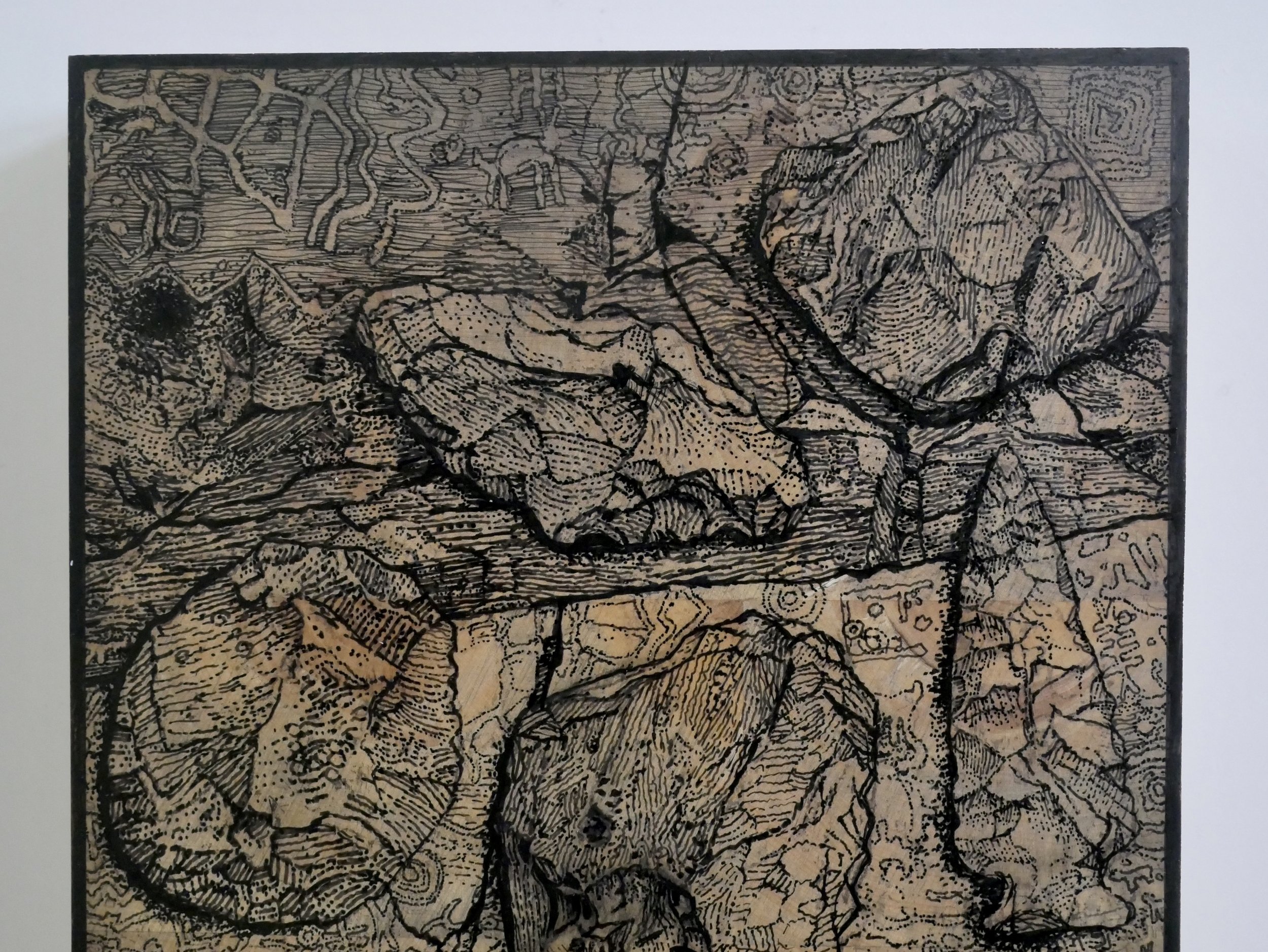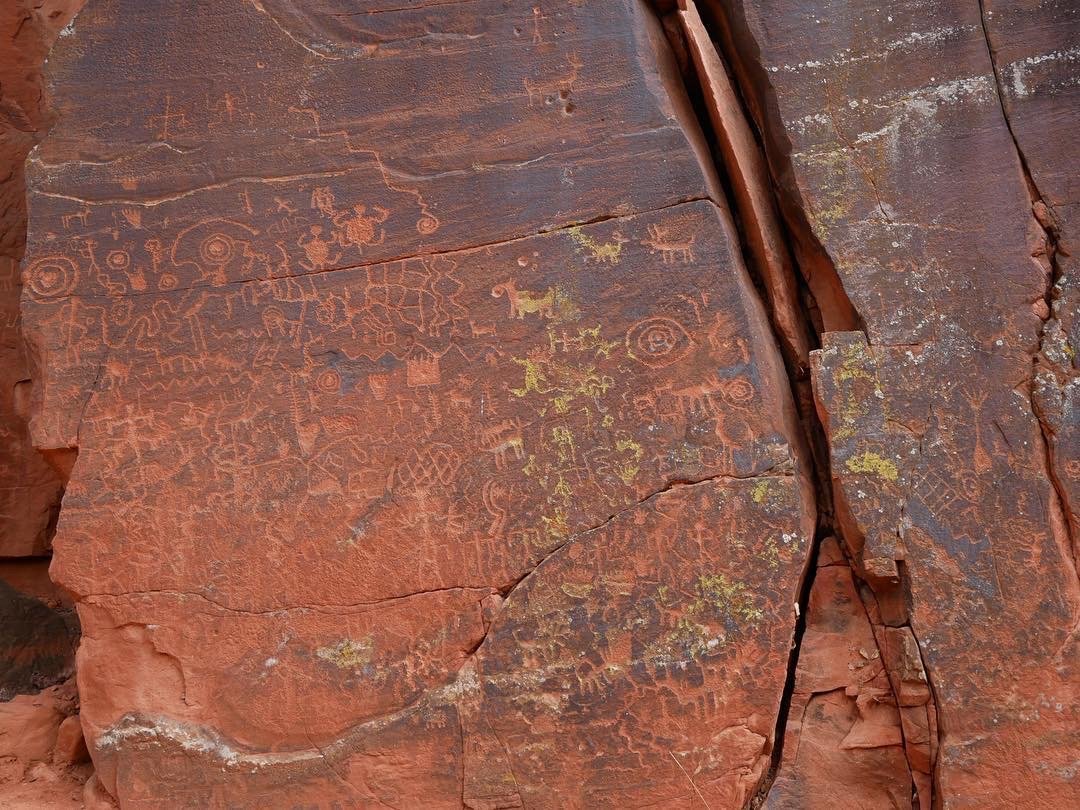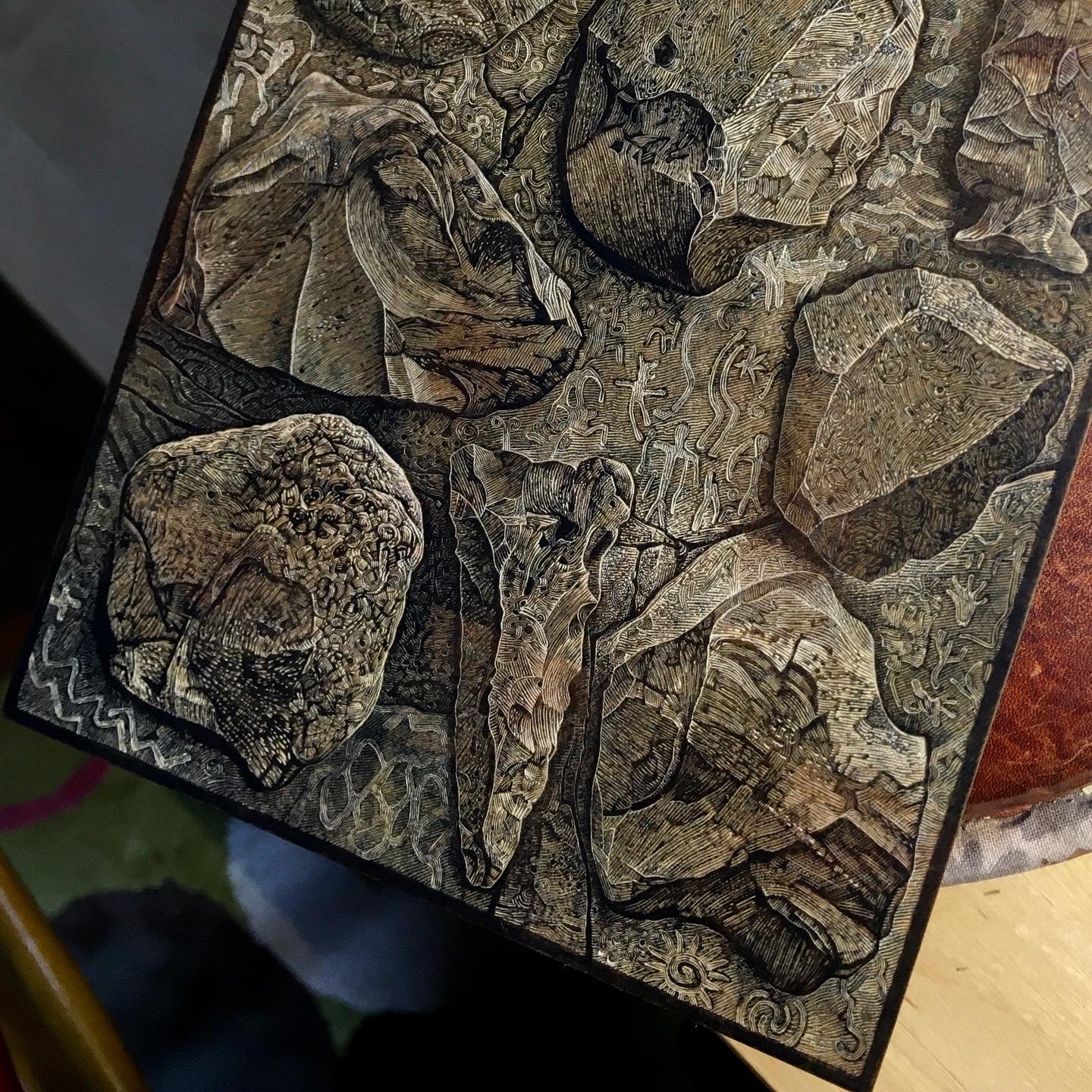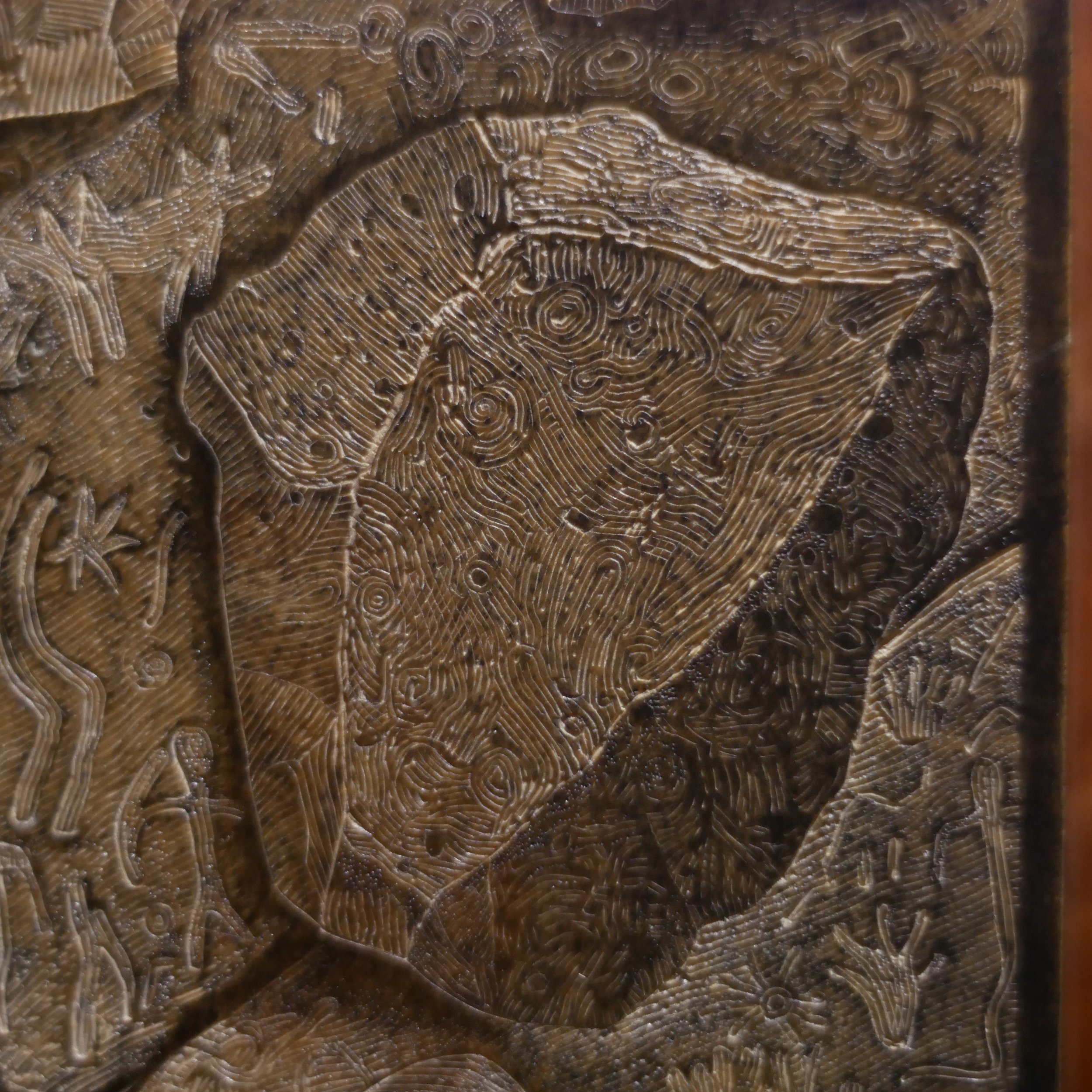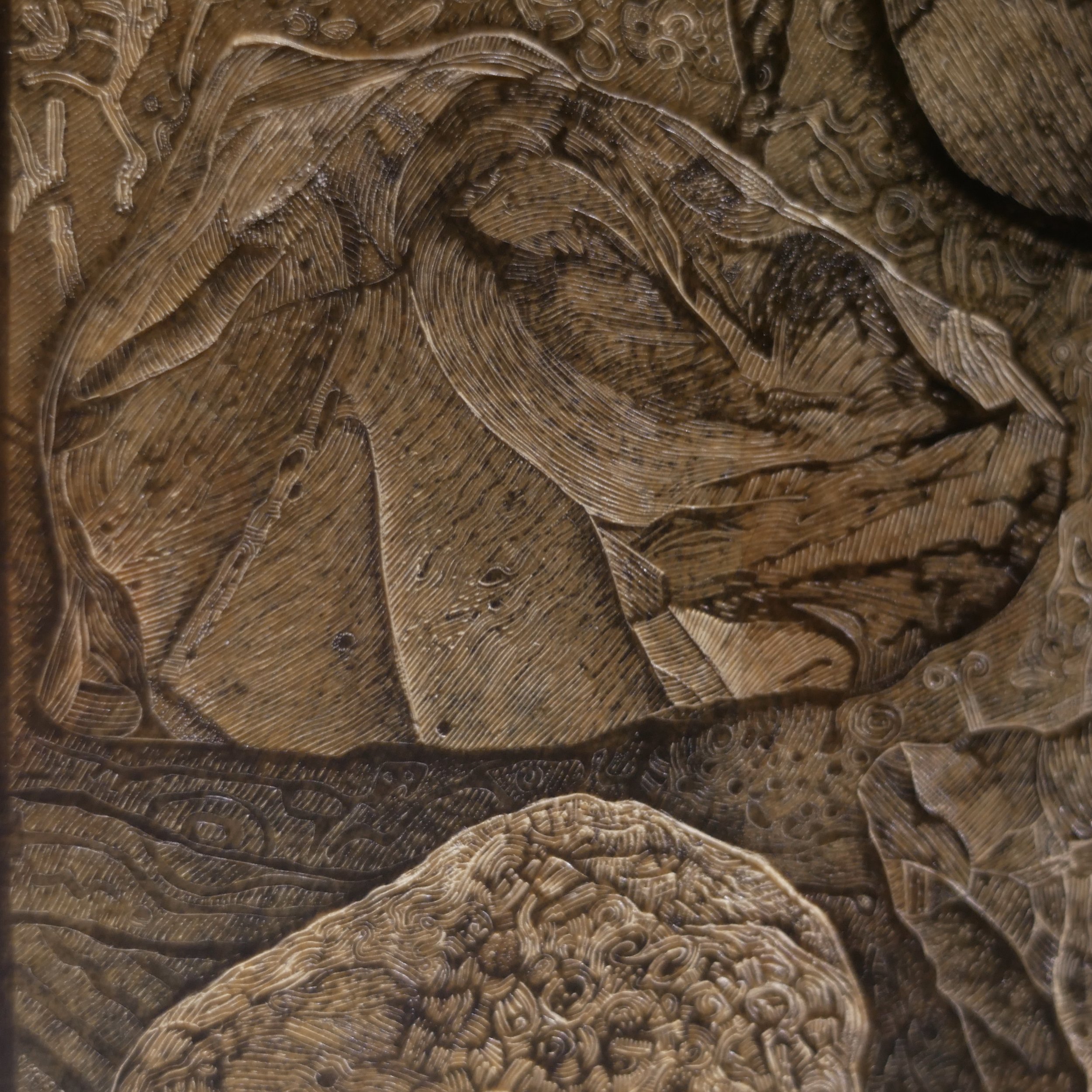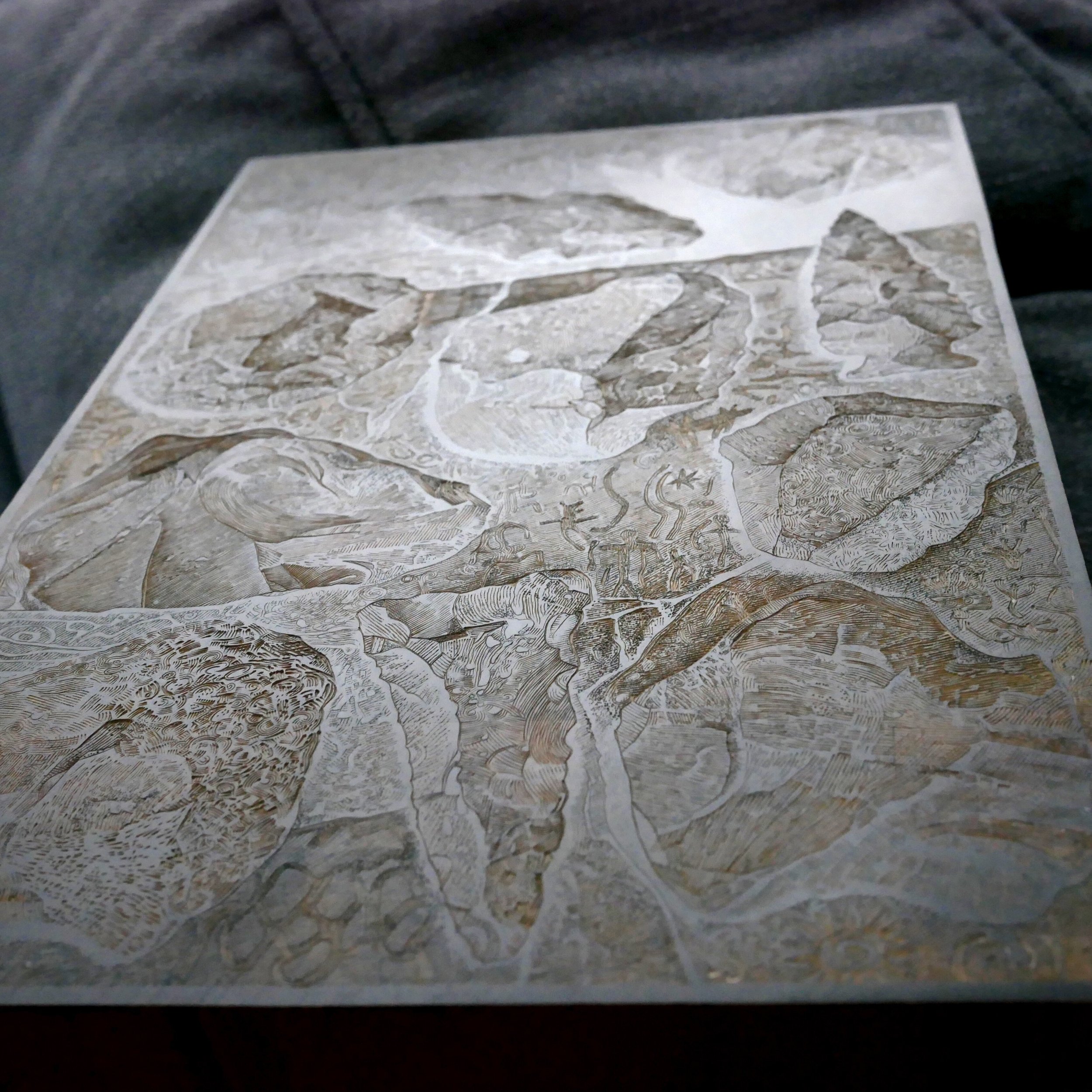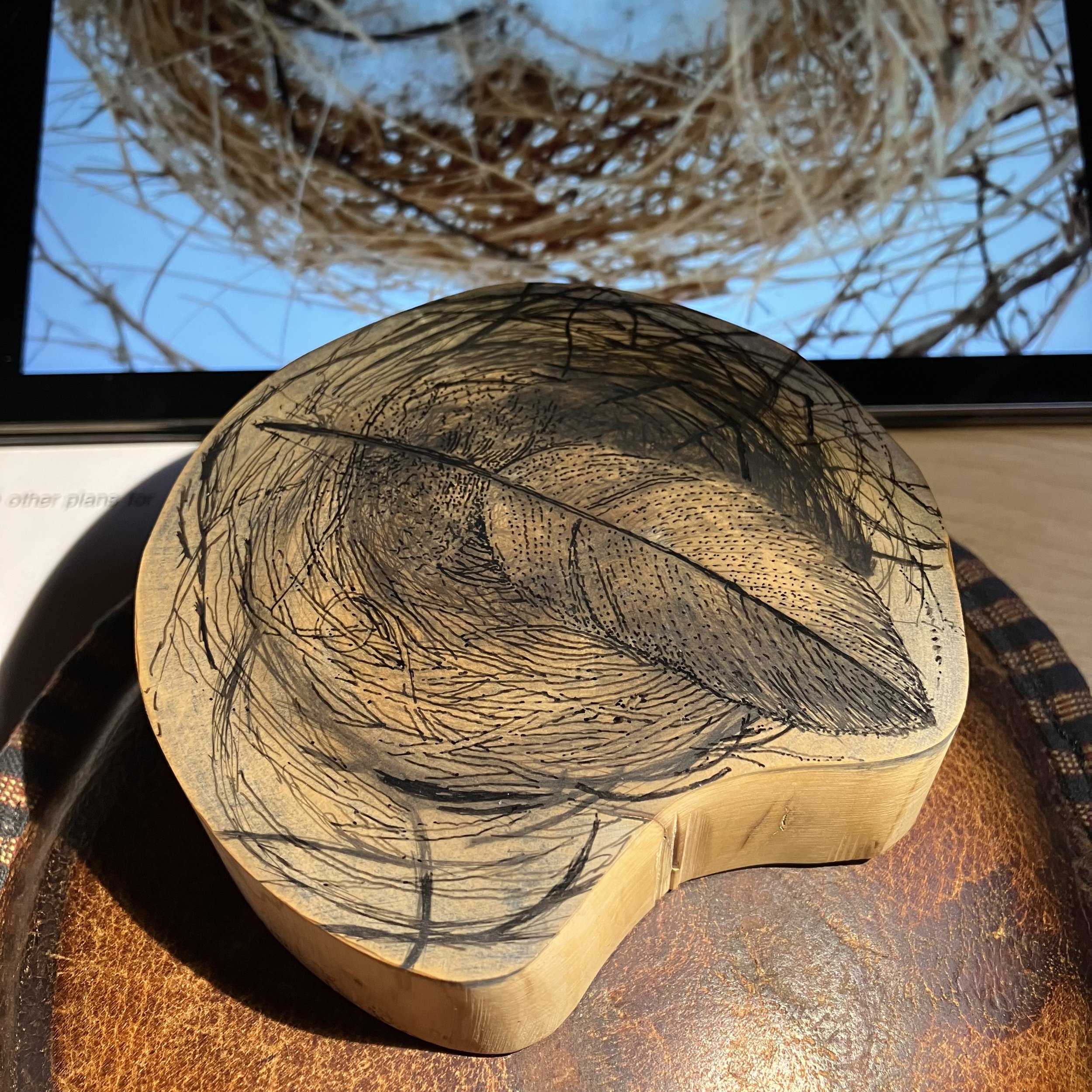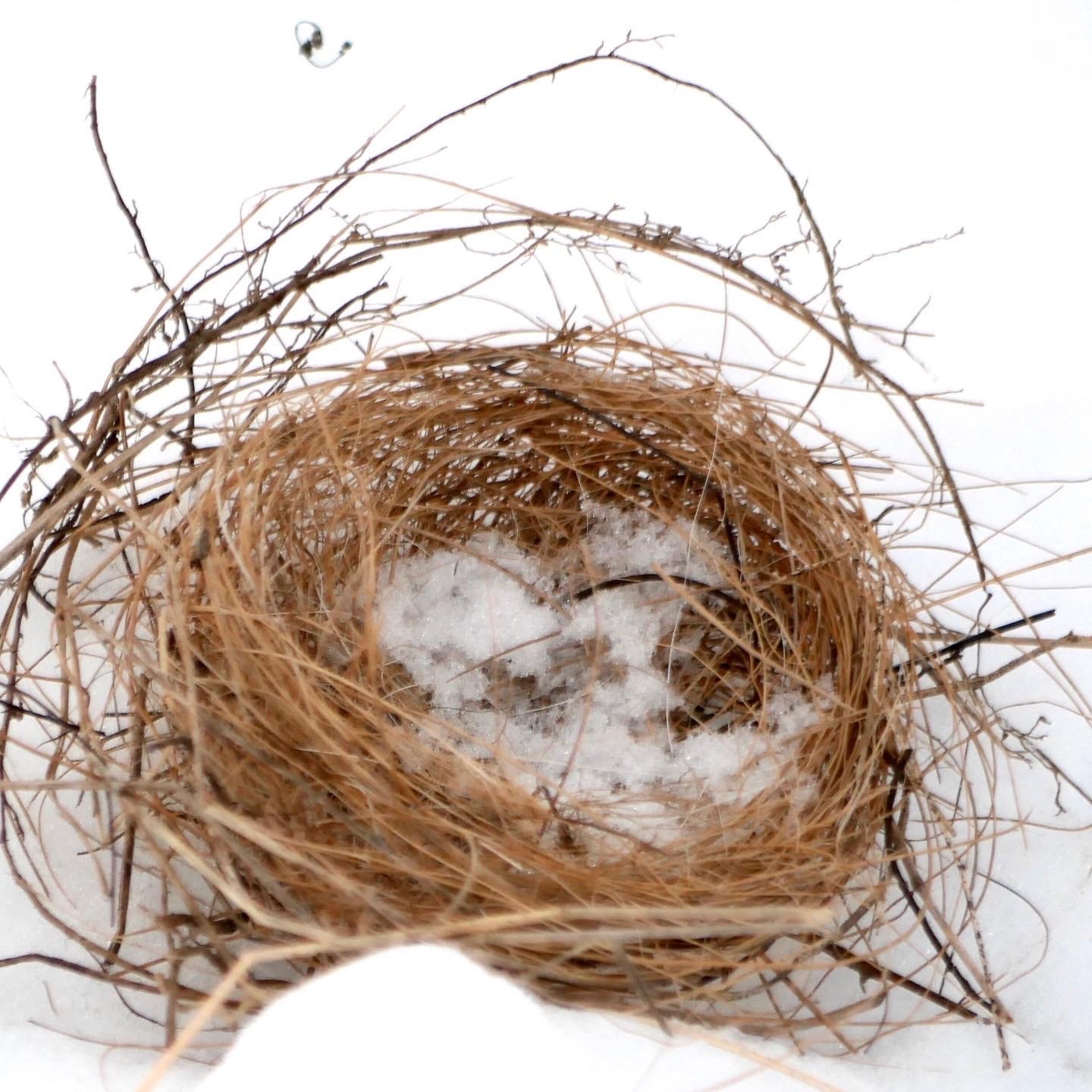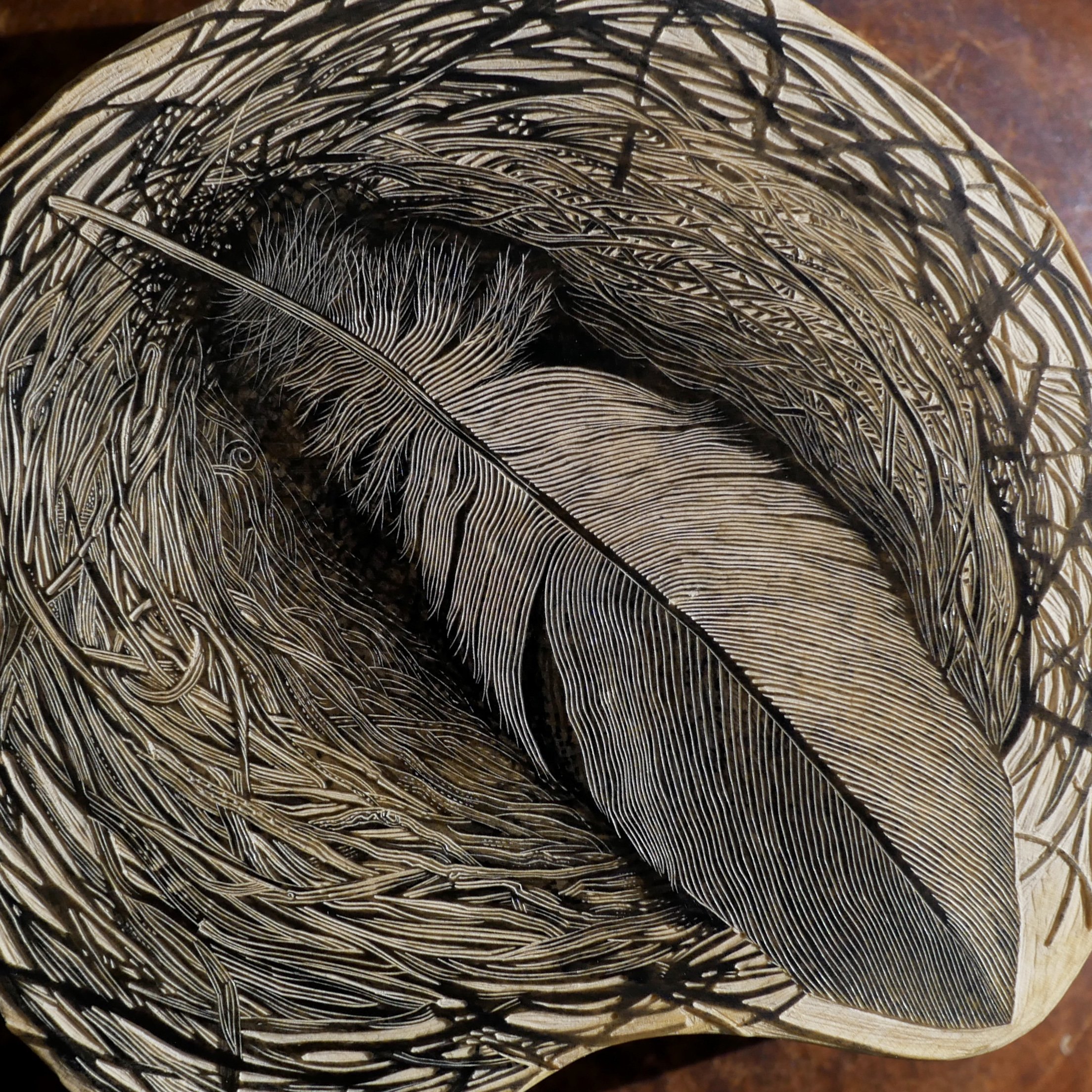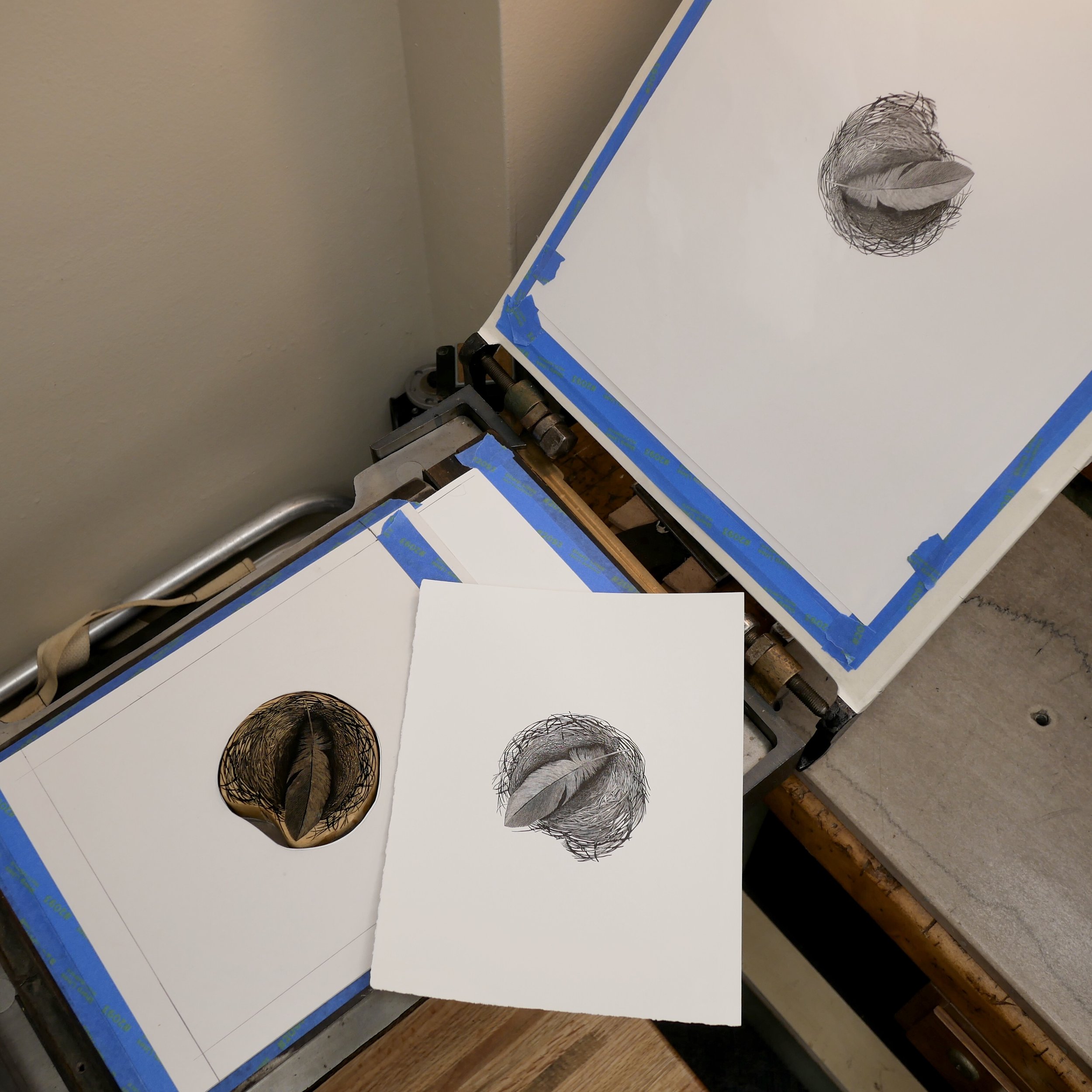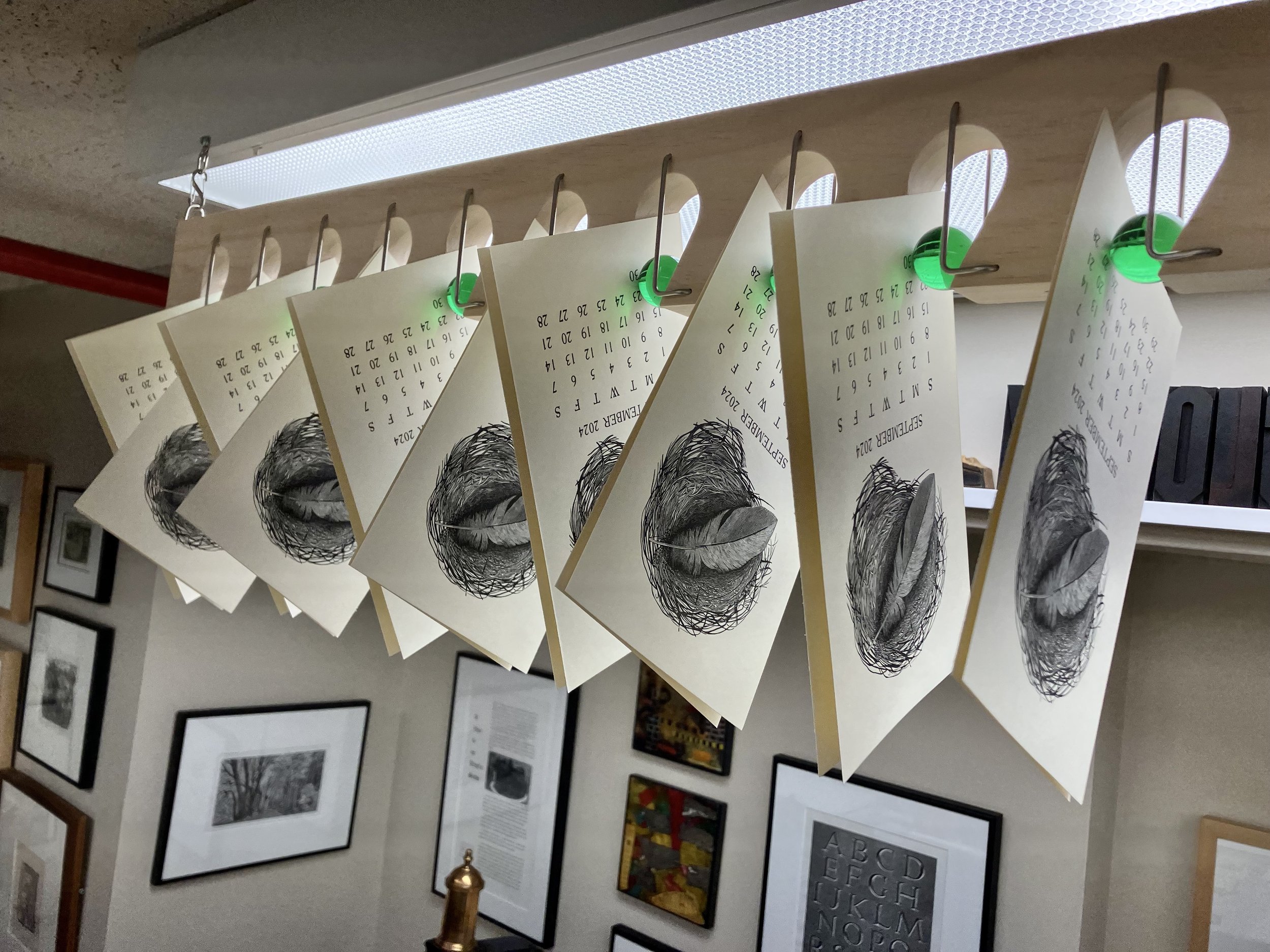Instead of working on my design and tonal study on paper, I am developing the image directly on the toned end-grain maple block, which is 6” wide and 8 3/8” high. My engraving work will be less detailed that this drawing, as there are way too many kernels of corn to portray finely. I most likely will work on a practice block to work out a “corny” method for engraving the kernels. The husks I look forward to engraving, bold and bright and with this image, I will use a stipple technique to portray the volcanic rock metate (a tool used to grind the kernels.)
the oval metate will appear dark against white at the top and light against black at the bottom. This image was inspired by my 2023 visit to Oaxaca, Mexico with family and friends.
Plenty of wood engraving challenges here, the corn cob with the missing kernels is something I will ponder, while I complete another wood engraving that I am working on.
The engraved lines I cut will be much different than these drawn lines, as what I cut away will appear white on the print. There is only black & white in the final print made from the block. What is seen as grey tones are created by engraving tints (parallel engraved lines) or stippling (spots “picked” away with a nicking upward of the very tip of the burin).
